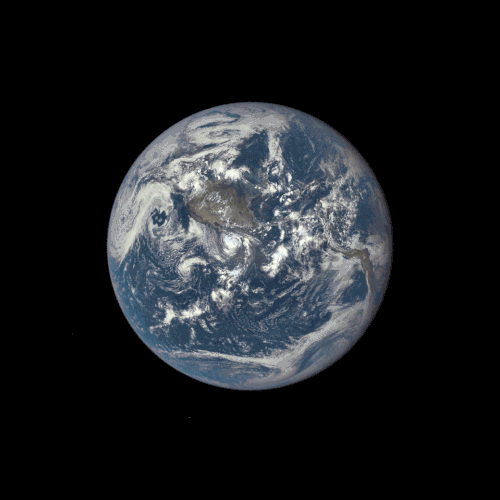★★★★★

★★★★★
#moonphoto #fullmoon #beautiful #moon #moonshot #nature #skyphotography #instagram #igersoftheday #igers #nightskyphotography #photo #nightphotography #moon_awards #moonlight #photography #skiesphotography #astronomy #moon_awards_bnw #wilderness #photographie #hometown #sky #naturephotography #space #photograph #night #skyporn #moonphotography #scotlandpotography (em Lisbon, Portugal)
More Posts from Space-m17-blog and Others

The International Space Station above the spinning Earth.
Photo credit: NASA

Welcome to the new, official NASA Tumblr. We’re going to be giving you a regular dose of space here. Follow along and join us as we share information, images and video about our mission of exploration and discovery. First up, check out the moon photobombing Earth in this new animated gif. The far side of the moon, illuminated by the sun, is seen as it crosses between our ‘EPIC’ camera on the Deep Space Climate Observatory (DSCOVR) satellite, and the Earth - one million miles away. Check it out: http://go.nasa.gov/1Dq0IO9
Bill Nye reading mean tweets









An Adaptable Species: Part 1 of 4 Episode 11: The Immortals, Cosmos: A SpaceTime Odyssey

A photo of Saturn. Took by Cassini with COISS on January 07, 2012 at 23:20:38. Detail page on OPUS database.






Illustration by Jean Luc Beghin for the 1970 edition of Spirou.
The top-right text says the image doesn’t depict any particular moment during the Apollo missions but that the two astronauts were picked arbitrarily: Frank Borman, commander of Apollo VIII (the first mission to fly around the moon) and Neil Armstrong, commander of Apollo XI (and the first person to walk on the moon).
I cleaned this image up a bit and the source-file can be found here, as well as other high definition scientific illustrations.


Saturn, Cincinnati Observatory. _Popular astronomy_ 1860.
Let’s learn something about rocket science
Sea Level Rise

For thousands of years, sea level has remained relatively stable. But now, Earth’s seas are rising. Since the beginning of the 20th century, they have risen about eight inches, and more than two inches in the last 20 years alone!

As water warms, it expands and takes up more space. That means that when oceans warm, the sea level rises. This summer, we’ve been researching exactly how global warming has impacted Greenland’s ice sheet. Our ICESat-2 mission will use a laser to measure the height of the planet’s surface. Over time, we will be able to provide a record of elevation change, and estimate how much water has melted into the ocean from land ice change.
So how much ice are we actually losing? Great question, but the answer might shock you. In Greenland alone, 303 gigatons of ice was lost in 2014!

Since we know that ice is melting, we’re working to gain a better understanding of how much and how fast. We’re using everything from planes, probes and boats, to satellites and lasers to determine the impact of global warming on the Earth’s ice.

Follow along for updates and information: http://climate.nasa.gov/
-
 all-of-the-nature-blog reblogged this · 9 years ago
all-of-the-nature-blog reblogged this · 9 years ago -
 theedenbeard-blog reblogged this · 9 years ago
theedenbeard-blog reblogged this · 9 years ago -
 hanskou liked this · 9 years ago
hanskou liked this · 9 years ago -
 pankakos reblogged this · 9 years ago
pankakos reblogged this · 9 years ago -
 forgedbymountains liked this · 9 years ago
forgedbymountains liked this · 9 years ago -
 azemoten reblogged this · 9 years ago
azemoten reblogged this · 9 years ago -
 misterivmist reblogged this · 9 years ago
misterivmist reblogged this · 9 years ago -
 estrellaw liked this · 9 years ago
estrellaw liked this · 9 years ago -
 justcallmewest liked this · 9 years ago
justcallmewest liked this · 9 years ago -
 thetriple3s reblogged this · 9 years ago
thetriple3s reblogged this · 9 years ago -
 delicious-flower1 liked this · 9 years ago
delicious-flower1 liked this · 9 years ago -
 space-m17-blog reblogged this · 9 years ago
space-m17-blog reblogged this · 9 years ago -
 paradoxfox-blog liked this · 9 years ago
paradoxfox-blog liked this · 9 years ago -
 enri4 reblogged this · 9 years ago
enri4 reblogged this · 9 years ago -
 enri4 liked this · 9 years ago
enri4 liked this · 9 years ago -
 letthewind-carryyouhome liked this · 9 years ago
letthewind-carryyouhome liked this · 9 years ago -
 kinxz reblogged this · 9 years ago
kinxz reblogged this · 9 years ago -
 trashboatprince reblogged this · 9 years ago
trashboatprince reblogged this · 9 years ago -
 mtnfemme reblogged this · 9 years ago
mtnfemme reblogged this · 9 years ago -
 thepromiseimadetoyou liked this · 9 years ago
thepromiseimadetoyou liked this · 9 years ago -
 itsnoside-blog liked this · 9 years ago
itsnoside-blog liked this · 9 years ago -
 tornebreacks liked this · 9 years ago
tornebreacks liked this · 9 years ago -
 endlessspaceuniverse-blog liked this · 9 years ago
endlessspaceuniverse-blog liked this · 9 years ago -
 reauxse liked this · 9 years ago
reauxse liked this · 9 years ago -
 meera-bhai liked this · 9 years ago
meera-bhai liked this · 9 years ago -
 f-scott-inebriate liked this · 9 years ago
f-scott-inebriate liked this · 9 years ago -
 obliteratingjune liked this · 9 years ago
obliteratingjune liked this · 9 years ago -
 swarmerzasz liked this · 9 years ago
swarmerzasz liked this · 9 years ago -
 endlessspaceuniverse-blog reblogged this · 9 years ago
endlessspaceuniverse-blog reblogged this · 9 years ago -
 rjfdalmeida reblogged this · 9 years ago
rjfdalmeida reblogged this · 9 years ago
I love space. I've been to space camp in Huntsville Alabama and I am planning on going every summer. I look forward to be an astronaut for nasa on the sls that is planned to be launched 2018. And the manned mission 2030. So yeah I won't let anything get in my way.
138 posts